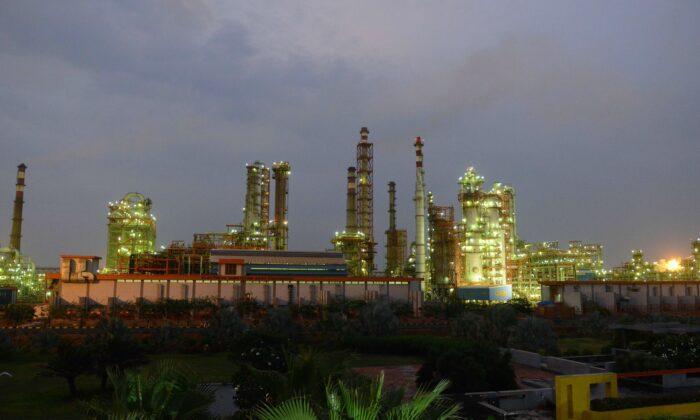News Analysis
Prime Minister Narendra Modi and President Trump rallied with 50,000 fans in Houston to celebrate India’s significant increase of U.S. crude oil imports offsetting China’s boycott.
S&P Global reported that China in late June promised to buy more U.S. agricultural and energy products. But after President Trump increased tariffs by 10 percent, Chinese crude oil traders told S&P in mid-August they were “shying away from U.S. crude as trade dispute uncertainties mean that government backing for purchase commitments could evaporate overnight, leaving them exposed to undelivered seaborne cargos.”
China began small scale importing of U.S. crude oil in 1996, but volumes took off in 2016 as the fracking boom tripled U.S. crude oil production and made America the world’s largest oil exporter. But as the Sino-U.S. trade war heated up in 2018, China slashed U.S. imports from about 15 million barrels (or 500,000 barrels a day) in June 2018, to zero two months later.
India replaced China’s demand as U.S. oil exports to India rose from about 6.4 million barrels (over 200,000 barrels a day) in April 2018 to about 21.5 million barrels (over 650,000 barrels a day) in March 2019. With the United States exporting 3.4 million barrels a day, India is now America’s second largest customer.
OPEC’s latest forecast expects India oil demand to grow faster than China. India’s demand is expected to rise 3.21 percent to 4.88 million barrels a day by the end of 2019 and accelerate to 3.36 percent to 5.05 million barrels a day in 2020. China’s demand is expected to grow 2.73 percent in 2019, but growth will slow to 2.37 percent in 2020.
The Epoch Times reported that Trump joined tens of thousands of Indian-Americans on Sept. 22 who packed into Houston’s NRG stadium for a rally with Indian Prime Minister Narendra Modi. The two allies held hands high as a cacophony of drums and cheers rocked America’s most important energy hub.
Modi praised Trump as a “very special person” who “needs no introduction.” Modi told the crowd that, “Today, we are witnessing a new history and a new chemistry in the making.” He added that the day was “witness of synergy between India and the U.S.”
As Trump stepped up to the microphone, the throng broke into a defining “USA! USA! USA!” Trump thundered to the mostly Indian-American crowd, “You have never had a better friend as president than President Donald Trump.” He added, “Under PM Modi’s leadership, the world is witnessing a strong, sovereign republic of India.”
Modi was also in Houston to lobby for a massive low-price U.S. liquid natural gas (LNG) contract. India has long-term LNG contracts at about $9.50 per million British thermal units to import 8.5 million tonnes from Qatar; 2.5 million tonnes from Russia’s Gazprom; and 1.44 million tonnes from Australia’s Gorgon project.
India’s LNG import capacity is expected to grow from 38.8 million tonnes per annum to 52.5 million tonnes over the next 3-4 years. The United States has the lowest production cost and is building the largest excess LNG capacity on the planet.
India’s Hindu Business reported that the day before the Sept. 22 Modi-Trump rally, Houston’s Tellurian Inc. signed a non-binding ‘Memorandum of Understanding’ with India’s Petronet LNG Ltd. to purchase up to 5 million tonnes of LNG at a long term price of about $4.50, and invest $2.5 billion in a U.S. based joint-venture.
The attacks on Saudi Arabia’s oil facilities that created history’s largest oil production disruption, is motivating large consumers like India to diversify away from the Middle East, according to Vanda Insights CEO Vandana Hari. She suggests, “If the U.S. can offer oil and gas supplies on sweetened terms, it can muscle into the Indian market.”
Chriss Street is an expert in macroeconomics, technology, and national security. He has served as CEO of several companies and is an active writer with more than 1,500 publications. He also regularly provides strategy lectures to graduate students at top Southern California universities.






Friends Read Free